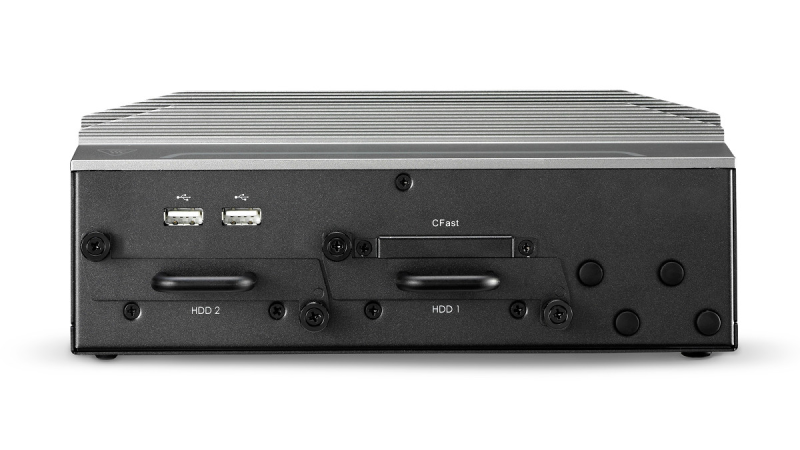How to Build a Strong Team with Cloud Employees

The traditional concept of putting together a team inside the limitations of a physical office is rapidly changing. Businesses may now tap into a broad pool of talent worldwide thanks to technological improvements thanks to cloud employees – remote workers who collaborate electronically. This new approach to team creation provides various advantages, including increased flexibility and cost-effectiveness. In this article, we’ll look at the essential tactics for assembling a solid team of cloud employees and utilizing their potential to propel your company forward.
Define Clear Objectives and Roles
Before venturing into the realm of cloud employees, it is critical to understand your team’s goals and individual roles. Each team member should know their responsibilities and how they contribute to the team’s broader goals. Setting clear expectations ensures remote workers’ efforts align with the organization’s objectives and vision.
With Cloud Employee, you can build a diversified team of cloud workers with access to specialized expertise worldwide and put them to work on your software development projects.
Emphasize Effective Communication
Communication is crucial to successful remote team formation. A complete communication plan is critical for cloud employees to retain teamwork and promote a sense of belonging. To support seamless interactions, use various communication technologies such as video conferencing platforms, instant messaging apps, and project management software. Regular check-ins, team meetings, and virtual conferences can all assist in creating rapport and keeping everyone on the same page.
Foster a Positive Remote Culture
Cloud employees and in-house teams must foster a positive team culture. Encourage a welcoming and inclusive environment where remote workers feel valued and connected to the organization. Virtual team-building events, online training, and recognition programs can all aid in the development of camaraderie and team morale.
Invest in Technology and Security
Investing in the correct technology is critical for remote collaboration to succeed. Cloud-based tools and robust project management platforms allow smooth communication, task tracking, and file sharing. Prioritize cybersecurity steps to protect critical company data and maintain a secure virtual work environment.
Prioritize Results and Accountability
With cloud employees, assessing productivity based on hours spent is no longer relevant. Instead, concentrate on the results and outcomes. Establish clear performance indicators for each project and foster a results-driven culture among the team members. This strategy encourages accountability and enables remote workers to manage their time efficiently.
Provide Ongoing Training and Development
Continuous learning is essential for keeping your team’s skills current and ensuring their advancement within the firm. Provide options for professional growth to remote employees, such as online courses, workshops, and mentorship programs. Empowering employees with new skills and information will improve their contributions to the team and your firm’s success.
Encourage Feedback and Adaptability
Within your remote team, emphasize a feedback-driven strategy. To develop a culture of continuous growth, encourage regular feedback from team members and managers. Be willing to change your team’s workflows and processes in response to this criticism. The ability to adapt to the demands and preferences of cloud employees is critical.
How Do I Manage The Performance Of Remote Employees?
Managing the success of remote employees necessitates a deliberate approach that promotes accountability, clear communication, and support. Here are some crucial pointers for efficiently managing the performance of your remote team:
Set Clear Expectations
Convey each team member’s performance expectations, goals, and key performance indicators (KPIs). Ascertain that they understand their roles and responsibilities and how their performance will be evaluated.
Regular Check-Ins
Schedule one-on-one meetings with each remote employee regularly to discuss progress, provide feedback, and resolve any issues that may arise. Depending on the employee’s demands and the nature of their work, these check-ins can be weekly or bi-weekly.
Goal Setting and Tracking
Set attainable and measurable goals with your remote staff in collaboration. Track their progress regularly and provide feedback on their performance on these objectives.
Performance Reviews
Conduct formal performance evaluations regularly (e.g., quarterly or annually). These should include a thorough review of the employee’s accomplishments, strengths, areas for improvement, and chances for advancement.
Provide Constructive Feedback
Provide specific and constructive comments to assist remote employees in improving their performance. Concentrate on their accomplishments and offer advice on how they might improve their skills and meet their goals.
Recognize and Appreciate Achievements
Celebrate remote team members’ accomplishments and victories. Recognizing their efforts and contributions encourages them to keep up their excellent work.
Foster Open Communication
Create an open and transparent environment where remote employees may express their problems, issues, and suggestions. To stay connected, use communication tools and encourage team members to raise questions or seek help as needed.
Offer Professional Development Opportunities
Support remote employees’ professional development by offering access to training, workshops, webinars, or mentoring programs.
Use Performance Management Software
Use performance management software or tools to track and analyze employee performance systematically. These solutions can expedite the performance evaluation process and centralize performance data.
Address Performance Issues Promptly
Address any performance issues or concerns as soon as possible and constructively. Provide assistance, additional training, or resources to employees to help them improve.
Encourage Peer Feedback
Create a peer feedback and support culture among team members. Encourage regular feedback from coworkers to gain valuable ideas and improve teamwork.
Focus on Results and Impact
Rather than micromanaging an employee’s activities, emphasize the outcomes and influence of their work. You can rely on your remote staff to provide results.
Support Work-Life Balance
Encourage work-life balance and provide a healthy work environment for remote employees. Respect their time and be accommodating when possible.
Remember that managing remote employee performance demands adaptability and flexibility. To develop a productive and engaged remote workforce, regularly examine your performance management tactics and adapt them depending on feedback and changing conditions.
Wrapping Up
Putting together a solid team of cloud employees is an exciting opportunity for firms to capitalize on the power of remote talent. You can build a cohesive and efficient virtual team by defining clear objectives, promoting good communication, creating a positive remote culture, and investing in technology. Prioritizing results and accountability, giving continual training, and accepting feedback and adaptation will help to strengthen your cloud workforce even more. As firms evolve in a dynamic global landscape, using cloud personnel can provide a long-term strategic advantage for success. Accept the possibilities of remote talent and create a team that propels your company to new heights.





